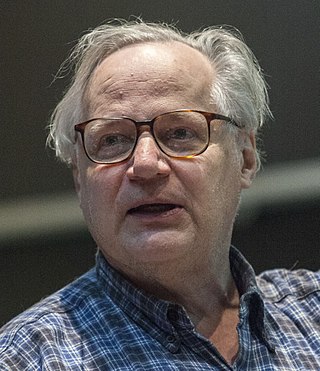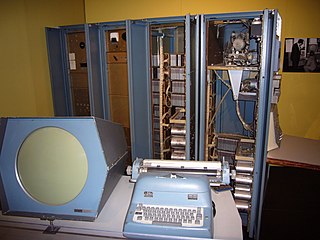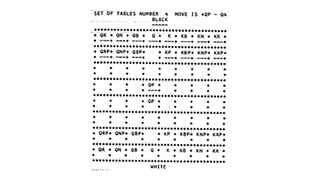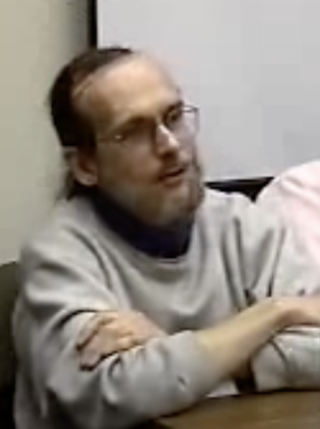
Lisp machines are general-purpose computers designed to efficiently run Lisp as their main software and programming language, usually via hardware support. They are an example of a high-level language computer architecture, and in a sense, they were the first commercial single-user workstations. Despite being modest in number Lisp machines commercially pioneered many now-commonplace technologies, including effective garbage collection, laser printing, windowing systems, computer mice, high-resolution bit-mapped raster graphics, computer graphic rendering, and networking innovations such as Chaosnet. Several firms built and sold Lisp machines in the 1980s: Symbolics, Lisp Machines Incorporated, Texas Instruments, and Xerox. The operating systems were written in Lisp Machine Lisp, Interlisp (Xerox), and later partly in Common Lisp.
Symbolics, Inc., was a privately held American computer manufacturer that acquired the assets of the former company and continues to sell and maintain the Open Genera Lisp system and the Macsyma computer algebra system.
Maclisp is a programming language, a dialect of the language Lisp. It originated at the Massachusetts Institute of Technology's (MIT) Project MAC in the late 1960s and was based on Lisp 1.5. Richard Greenblatt was the main developer of the original codebase for the PDP-6; Jon L. White was responsible for its later maintenance and development. The name Maclisp began being used in the early 1970s to distinguish it from other forks of PDP-6 Lisp, notably BBN Lisp.

The Tech Model Railroad Club (TMRC) is a student organization at the Massachusetts Institute of Technology (MIT). Historically it has been a wellspring of hacker culture and the oldest such hacking group in North America. Formed in 1946, its HO scale layout specializes in automated operation of model trains.
Incompatible Timesharing System (ITS) is a time-sharing operating system developed principally by the MIT Artificial Intelligence Laboratory, with help from Project MAC. The name is the jocular complement of the MIT Compatible Time-Sharing System (CTSS).

Computer Science and Artificial Intelligence Laboratory (CSAIL) is a research institute at the Massachusetts Institute of Technology (MIT) formed by the 2003 merger of the Laboratory for Computer Science (LCS) and the Artificial Intelligence Laboratory. Housed within the Ray and Maria Stata Center, CSAIL is the largest on-campus laboratory as measured by research scope and membership. It is part of the Schwarzman College of Computing but is also overseen by the MIT Vice President of Research.

Richard D. Greenblatt is an American computer programmer. Along with Bill Gosper, he may be considered to have founded the hacker community, and holds a place of distinction in the communities of the programming language Lisp and of the Massachusetts Institute of Technology (MIT) Artificial Intelligence Laboratory.
MDL is a programming language, a descendant of the language Lisp. Its initial purpose was to provide high level language support for the Dynamic Modeling Group at Massachusetts Institute of Technology's (MIT) Project MAC. It was developed in 1971 on a PDP-10 running ITS and later ran on TENEX, TOPS-20, BSD, and AEGIS.
Lisp Machines, Inc. was a company formed in 1979 by Richard Greenblatt of MIT's Artificial Intelligence Laboratory to build Lisp machines. It was based in Cambridge, Massachusetts.

Alan Kotok was an American computer scientist known for his work at Digital Equipment Corporation and at the World Wide Web Consortium (W3C). Steven Levy, in his book Hackers: Heroes of the Computer Revolution, describes Kotok and his classmates at the Massachusetts Institute of Technology (MIT) as the first true hackers.

Expensive Desk Calculator by Robert A. Wagner is thought to be computing's first interactive calculation program.
Expensive Tape Recorder is a digital audio program written by David Gross while a student at the Massachusetts Institute of Technology. Gross developed the idea with Alan Kotok, a fellow member of the Tech Model Railroad Club. The recorder and playback system ran in the late 1950s or early 1960s on MIT's TX-0 computer on loan from Lincoln Laboratory.
New Implementation of LISP (NIL) is a programming language, a dialect of the language Lisp, developed at the Massachusetts Institute of Technology (MIT) during the 1970s, and intended to be the successor to the language Maclisp. It is a 32-bit implementation, and was in part a response to Digital Equipment Corporation's (DEC) VAX computer. The project was headed by Jon L White, with a stated goal of maintaining compatibility with MacLisp while fixing many of its problems.

Kotok-McCarthy also known as A Chess Playing Program for the IBM 7090 Computer was the first computer program to play chess convincingly. It is also remembered because it played in and lost the first chess match between two computer programs. A pseudocode of the program is in Figure 11.15 of.
T-Square is an early drafting program written by Peter Samson assisted by Alan Kotok and possibly Robert A. Saunders while they were students at the Massachusetts Institute of Technology and members of the Tech Model Railroad Club.
Daniel L. Weinreb was an American computer scientist and programmer, with significant work in the environment of the programming language Lisp.
The AI Memos are a series of influential memorandums and technical reports published by the MIT AI Lab, Massachusetts Institute of Technology, United States. They cover Artificial Intelligence, a field of computer science.
The history of the programming language Scheme begins with the development of earlier members of the Lisp family of languages during the second half of the twentieth century. During the design and development period of Scheme, language designers Guy L. Steele and Gerald Jay Sussman released an influential series of Massachusetts Institute of Technology (MIT) AI Memos known as the Lambda Papers (1975–1980). This resulted in the growth of popularity in the language and the era of standardization from 1990 onward. Much of the history of Scheme has been documented by the developers themselves.

David A. Moon is a programmer and computer scientist, known for his work on the Lisp programming language, as co-author of the Emacs text editor, as the inventor of ephemeral garbage collection, and as one of the designers of the Dylan programming language. Guy L. Steele Jr. and Richard P. Gabriel (1993) name him as a leader of the Common Lisp movement and describe him as "a seductively powerful thinker, quiet and often insulting, whose arguments are almost impossible to refute".
Robert Alan Saunders is an American computer scientist, most famous for being an influential computer programmer. Saunders joined the Tech Model Railroad Club (TMRC) led by Alan Kotok, Peter Samson, and himself. They then met Marvin Minsky and other influential pioneers in what was then known as Artificial Intelligence.







